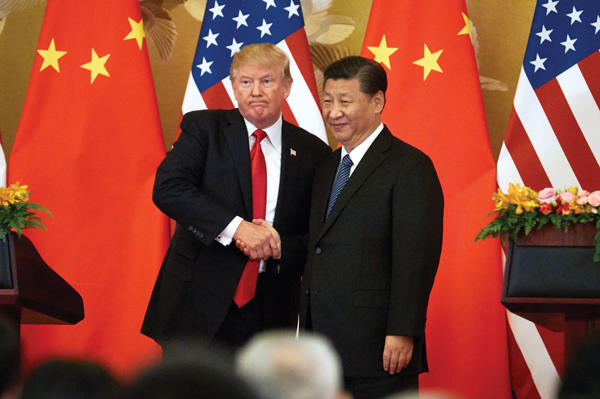Trending
Tallying the trade war
How Trump’s escalating tensions with China impact investment and development in NYC real estate

The multibillion-dollar trade war between the United States and China hit a boiling point this summer, with the real estate industry caught in the crosshairs.
In June — more than a year after firing his first salvo and levying tariffs on solar panels from China — President Donald Trump threatened the People’s Republic with another $350 billion in taxes on goods. Chinese President Xi Jinping quickly responded by jacking up tariffs on $60 billion of U.S. goods.
Much of the attention about the trade war, which is closing in on 400 days, has been on U.S. consumers getting hit with price increases on everything from washing machines to computers.
But the real estate industry is also feeling the effects. For developers, that will come largely in the form of pricier raw construction materials such as steel, cooling equipment and granite countertops. And that will make it trickier to plan and budget new projects.
“From a development perspective, you’re doing your deals two to four years out, so you want more predictability and less volatility,” developer Daren Hornig of Hornig Capital Partners told The Real Deal in May. “If we could just put this one behind us and get this trade deal resolved, that would make a lot of people globally very happy.”
Trump and Xi held high-profile talks at the G20 Summit in Japan in June. But there’s been little sign of progress since, and last month, China reportedly urged the Trump administration to “make up its mind” about reaching a trade deal.
Although Trump’s main target has been China, the White House has also imposed tariffs on goods from Canada, India, Mexico and the European Union — arguing that those trading partners (all historically U.S. allies) have taken advantage of U.S. policy and dumped cheap products on the market here while also undercutting domestic manufacturing. Each of those partners has retaliated with its own levies on U.S. goods.
Below is a rundown of some of the key trade stats and their impact on the industry.
5,745

The number of products from China the Trump administration has placed tariffs on, including everything from building materials and furniture to semiconductors and cellphones. That’s amounted to $250 billion in goods since last year. In return, China has taxed $110 billion worth of U.S. imports coming into its shores.
92%
The drop in Chinese U.S. investment in 2018’s first half, according to consulting firm Rhodium Group. While that decline began with China’s capital controls, trade war tensions helped “close the spigot,” per Forbes. U.S. home purchases by foreign buyers (the majority from China), meanwhile, tumbled 36 percent between April 2018 and March 2019, a recent NAR report noted.
 25%
25%
The increased foreign steel tariffs Trump implemented last year, up from 10 percent. The hike sent prices for rolled steel — used in some of New York’s latest supertalls, including One Vanderbilt and the Spiral — soaring to a decade-high of $920 a ton last July. But last month, prices were much lower at about $557 per ton, pushed down by domestic manufacturers ramping up production and new imports from Canada and Mexico.
$100M
A high-end estimate of how much the steel tariff would push up the price to build the shell and core of a 90-story building in Hudson Yards, according to the global consultancy Turner & Townsend. The U.K.-based firm estimates that 1.2 million tons of steel went into new buildings across the five boroughs over the past year.
#2
New York City’s rank on the list of most expensive cities in the world when it comes to construction. Average construction costs here (across six building types) were $368 per square foot in 2018 versus $417 in San Francisco, which ranked No. 1. Those costs jumped 3.5 percent in NYC last year and are projected to rise another 3 percent in 2019.
148
 The number of times Donald Trump has tweeted the word “tariff” or “tariffs” since launching his presidential campaign in 2015, according to the Trump Twitter Archive. By comparison, he’s tweeted “wall” 460 times.
The number of times Donald Trump has tweeted the word “tariff” or “tariffs” since launching his presidential campaign in 2015, according to the Trump Twitter Archive. By comparison, he’s tweeted “wall” 460 times.
260,000
The amount of estimated jobs the trade war has cost the U.S. economy through June 2019, according to Moody’s Analytics chief economist, Mark Zandi. That amounts to more than a month’s worth of employment growth. Among the jobs lost, about 130,000 were in manufacturing, 80,000 were in transportation and distribution, and the remaining 50,000 were across several other industries.
600

The number of U.S. companies — including such mega retailers as Costco, Walmart and Target — that wrote to Trump in June urging him to end the trade war. Many have said that price increases will be inevitable if it doesn’t end soon. Trump, of course, is relying on a strong economy to buoy him to reelection.




